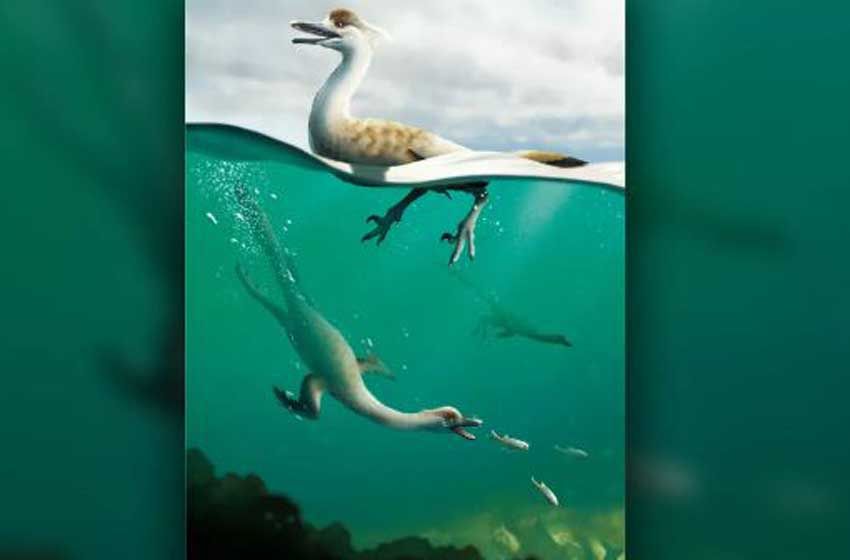Loading…
Scientists recently discovered the fossils of the first bipedal non-avian, carnivorous (theropod) dinosaur with a slender body resembling a diving bird. Photo/Live Science
Natovenator polydontus comes from the Latin words for “swimming” (nato) and “hunter” (venator), while the species polydontus means “many teeth” in Greek. With “incredibly numerous” teeth and “dense” jaws, this underwater dinosaur was a fearsome aquatic predator.
The number and shape of its teeth indicate that it hunted fish or insects. Dinosaurs with wavy necks and slender bodies like modern diving birds are thought to have been in the Cretaceous sea depths between 71 million and 72 million years ago.
Read also; The mystery of the world’s smallest dinosaur fossils has been revealed
The skeleton found was in extraordinary condition with an almost complete skull. The fossils were excavated from the Baruungoyot Formation (also spelled Barun Goyot), a locality in the southern Mongolian Gobi Desert that dates to the Cretaceous Period (145 million to 66 million years ago).
In life, the dinosaur was the size of a mallard. The researchers noted that its swan-like neck, flippered forelimbs and toe proportions were similar to those of the Mongolian theropod genus Halszkaraptor, which is thought to live in water.
“Natovenator is a valuable discovery in reawakening how diverse the ecological locations of dinosaurs were,” said Yuong-Nam Lee, professor of vertebrate paleontology at Seoul National University’s School of Earth and Environmental Sciences in South Korea.
Natovenator polydontus probably used its short, flattened forelimbs to paddle through water. One of the most compelling clues to its aquatic habits is its rib cage.
Read also; Older than dinosaurs, ancient sharks caught by fishermen
In terrestrial theropods, the dorsal rib extends from the vertebrae in a mostly horizontal arc. But in Natovenator polydontus, these ribs curve back towards the tail.
“Finding a semi-aquatic dinosaur means that the ecological diversity of the dinosaurs was extremely high and could change our preconceptions about the dinosaur lifestyle. More than 30 different tetrapod lineages have independently invaded aquatic ecosystems,” said Lee.
(wib)


